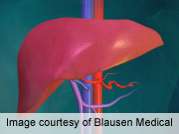The proportion of livers not used for transplantation is increasing, with the primary causes being donation after cardiac death, older donor age, greater body mass index, and increasing diabetes prevalence, according to research published in the January issue of Liver Transplantation.
(HealthDay)—The proportion of livers not used for transplantation is increasing, with the primary causes being donation after cardiac death (DCD), older donor age, greater body mass index (BMI), and increasing diabetes prevalence, according to research published in the January issue of Liver Transplantation.
Eric S. Orman, M.D., of the University of North Carolina at Chapel Hill, and colleagues used data from the United Network for Organ Sharing database for 107,259 organ donors to examine trends in donor liver utilization and the association between donor characteristics and liver nonuse between 2004 and 2010.
The researchers found that the number of unused livers decreased from 66 percent of donors in 1988 to 15 percent in 2004, and then increased to 21 percent in 2010. Over time, donor age, BMI, and the prevalence of diabetes and DCD all increased, and these factors correlated with liver nonuse. The odds ratio for nonuse was highest for DCD and increased from 5.53 in 2004 to 21.31 in 2011. Overall, in 2010, DCD accounted for 28 percent of all liver nonuse, up from 9 percent in 2004.
"A better understanding of the reasons for the increasing proportion of DCD in particular is critical to understanding this declining utilization," the authors write. "These trends, along with stagnant donation rates, suggest significant declines in liver transplant availability in the coming years."
More information:
Abstract
Full Text
Journal information: Liver Transplantation
Copyright © 2013 HealthDay. All rights reserved.



















